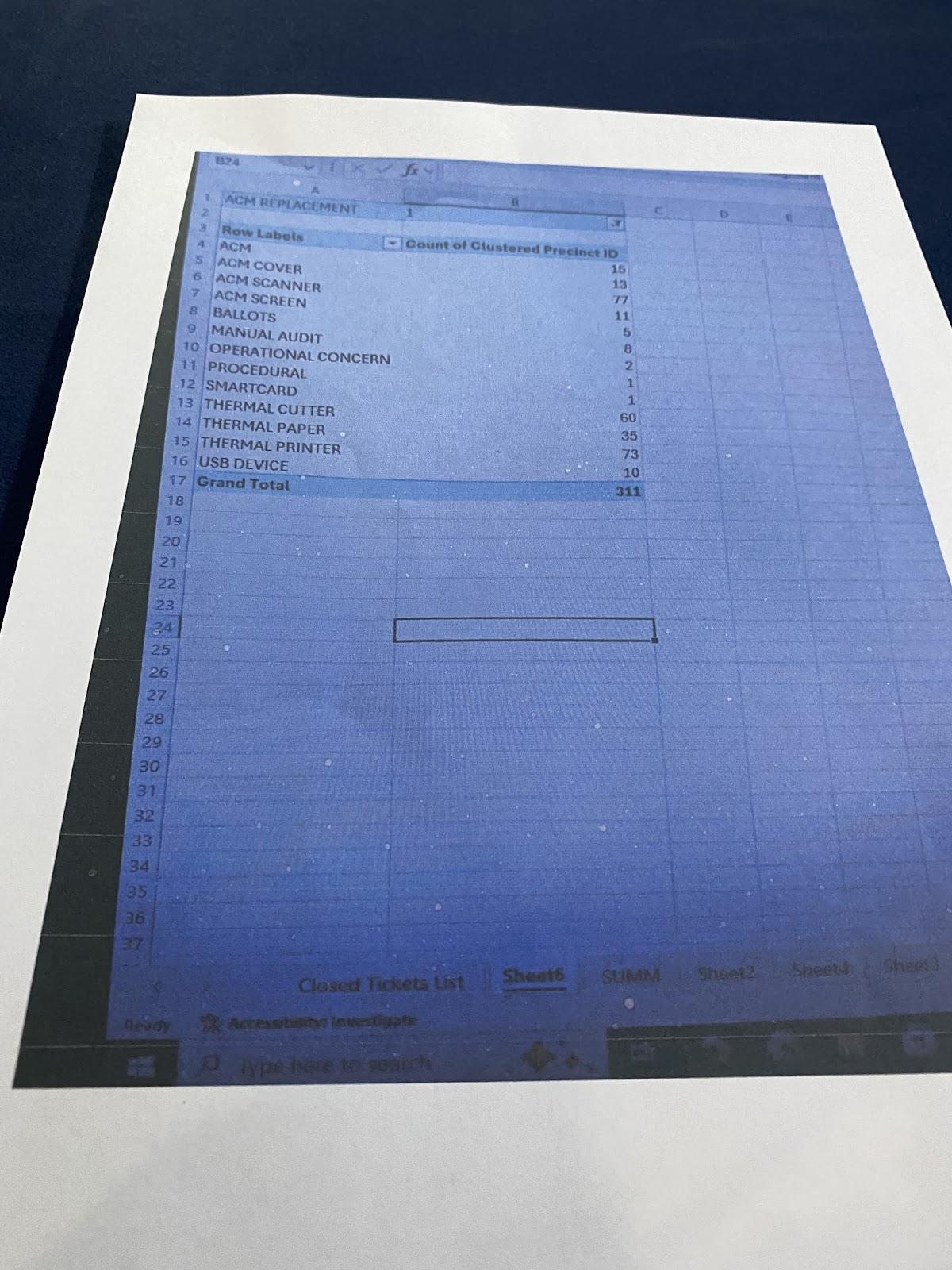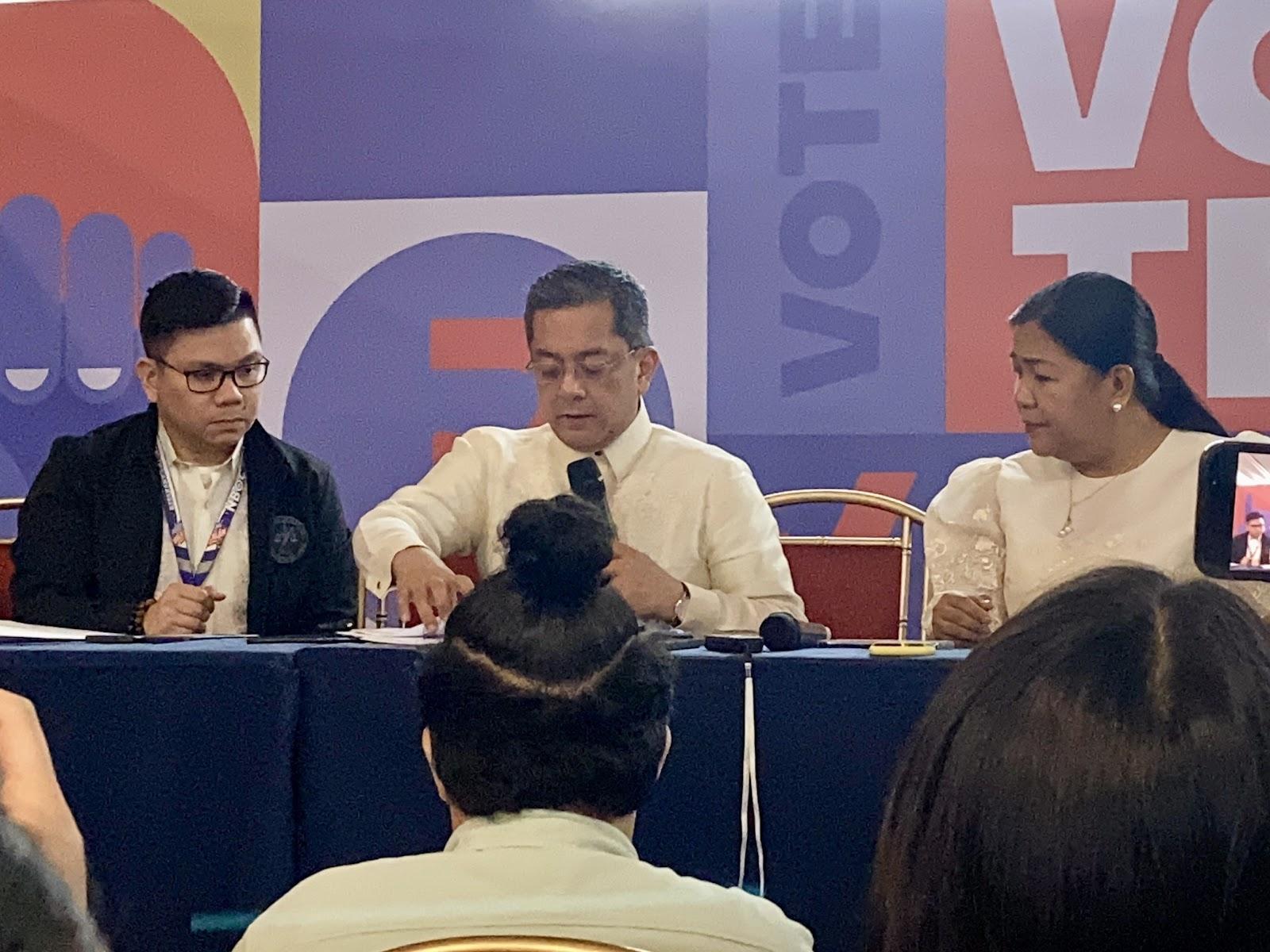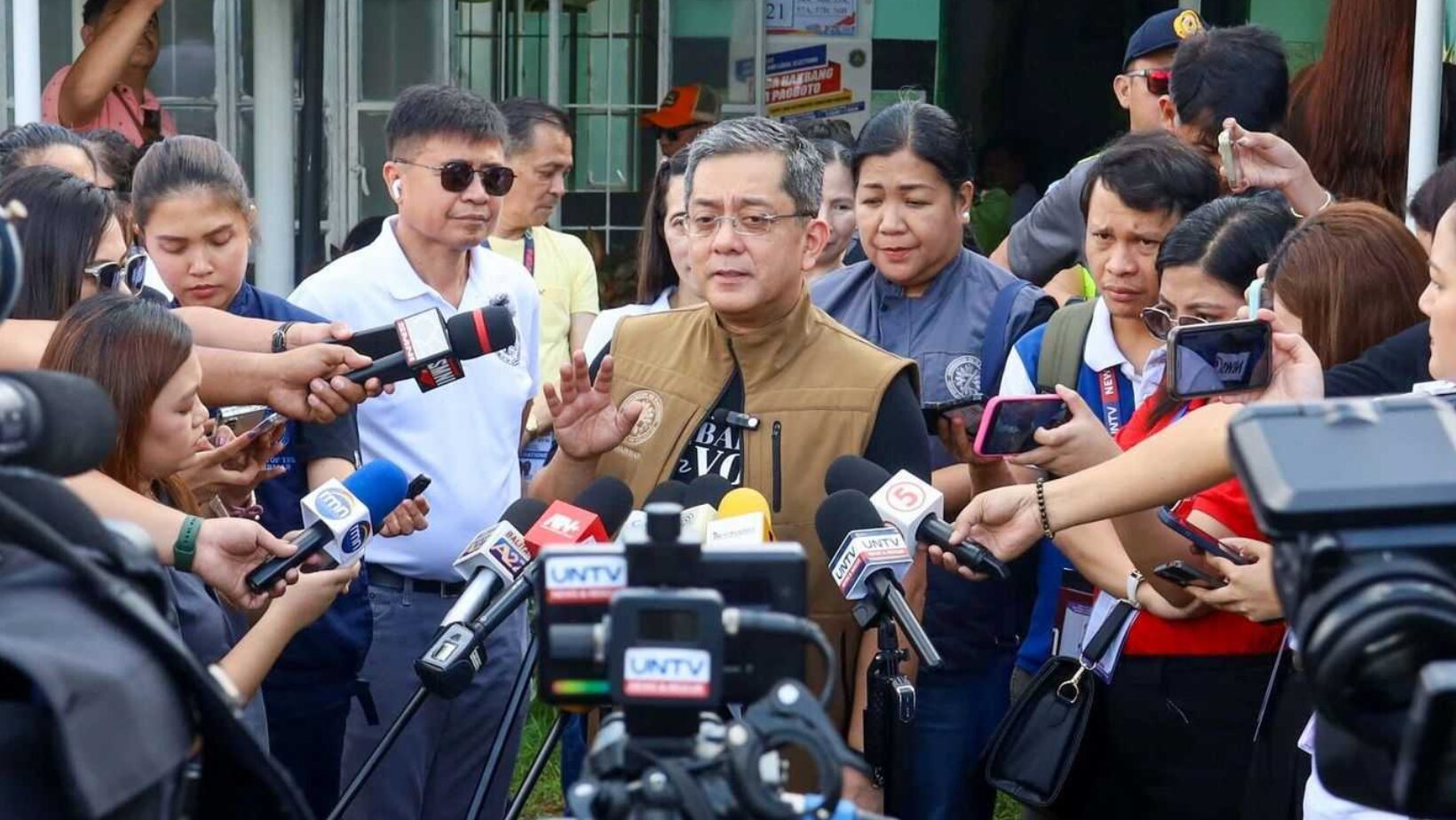Issues concerning the automated counting machines (ACMs) hounded voters despite the Commission on Elections (Comelec) reporting that the number of machines replaced this election was significantly lower compared to 2022.
In a media briefing Monday afternoon, Comelec chairman George Garcia disclosed that only 311 of the 16,000 contingency machines were used to replace those that malfunctioned.
“As compared to the 2022 elections where during the first few hours of the voting, 2500 na kaagad ‘yung pinalitan ng Comelec, dito, in all fairness, 311 lang ‘yung napalitan,” Garcia said.

Earlier today, Comelec Spokesperson John Rex Laudiangco said these machine errors are not “major catastrophic failures.”
Throughout the day, election watchdogs documented a number of reports concerning the counting machines. The Vote Report PH showed that ACM issues were the most frequently reported election irregularities, comprising 49% of cases (557 reports).
“Voters commonly cite ink smudging, overly sensitive scanners, and a high incidence of overvotes as recurring problems,” the report read.
No proof of mismatch
Some voters also claimed online that the names that appeared in their election receipts did not match the names of the candidates they voted for.
“We don’t have evidence or proof on that kasi napakataas ‘yung posibilidad na kahit hindi ‘yun ‘yung binoto nila, ‘yun yung nailagay nila kasi wala naman sila maipakita,” Garcia said, noting that voters were prohibited from taking photos of their election receipts.
He explained that the “best evidence” to prove or disprove this claim will be seen in the evening once ballot picture images are reviewed.
“Kung 300 ang bumoto sa mismong presinto, 300 din na ballot images ang makikita ng bawat isa. [D]’yan po natin makikita kung tama ‘yung resibo as against dun sa tama yung election returns,” he added.
ACM performance not up to par
Aside from incidents of violence and disturbances in polling centers, the National Citizens’ Movement for Free Elections National Chairperson (NAMFREL) also received reports of machines not performing as expected. These, however, were promptly resolved.
Some of the issues include “voter-verified paper audit trail paper jam, ballots not being accepted at first try but accepted at second,” and “ballots not being accepted because scanners were not clean.”
In their 12 p.m. media briefing, NAMFREL National Chairperson Lito Averia said that the hot weather, high humidity and even dust particles were most likely behind the technical issues.
“‘Yung mga makina, tinest ‘yan doon sa magandang environment — aircon, malinis, pero ‘pag dating sa mga voting centers, iba-iba ‘yung kondisyon,” he explained.
Heat, humidity and the location of polling centers were factors that contributed to the machines’ decreased performance or breakdown, especially in areas near bodies of water.
Cleaning the scanning bars of the machines resolved many of these issues, reported NAMFREL volunteers on the ground. However, in a bulletin sent to the media later, they said there were cases when members of the electoral board set aside ballots that were still not accepted after multiple retries.
Immediate replacement
Garcia, who visited polling places and monitored the conduct of elections on the ground, confirmed these issues.
“Ang ginawa po ng inyong komisyon, sa halip na hayaan naming mag-bog down completely ang makina ay kaagad natin itong pina-replace ng mga bagong makina na contingency,” he said.
With the repeated problems concerning the machines, another election watchdog, Kontra Daya, issued a statement calling on the Comelec to conduct manual counting at the precinct level.
“With the verified incident reports gathered so far, there is more than enough empirical basis to call for manual counting at the precinct level before electronic transmission,” the statement read.
As of 11:30 PM, however, 90.76% of local election returns have already been transmitted to Comelec.
During the briefing, the poll body was confident in affirming that “there is no failure of elections.” With PSALM MISHAEL TARUC






